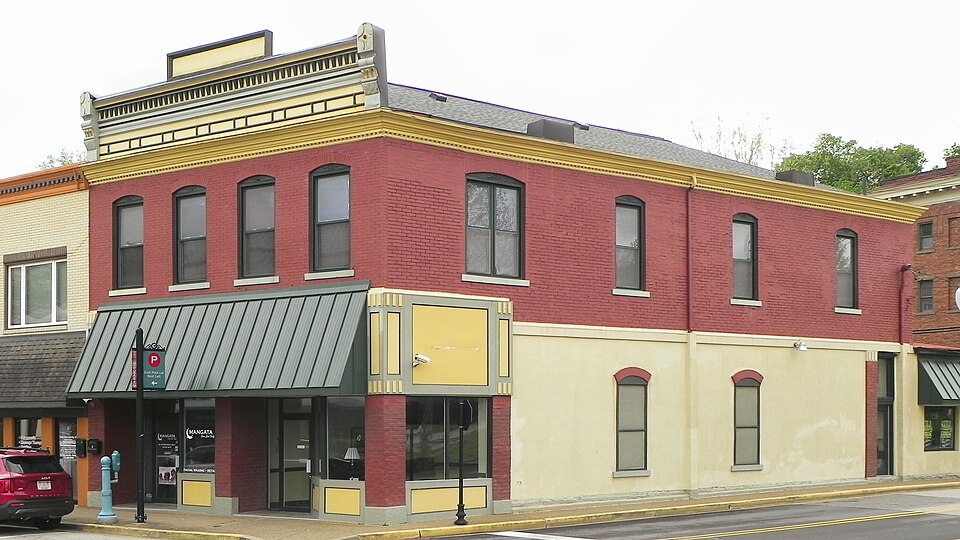
Main Street in Carnegie has a good assortment of styles from mid-Victorian on. Here we walk up the eastern half of the street, taking in a few of the buildings we haven’t separately noted.
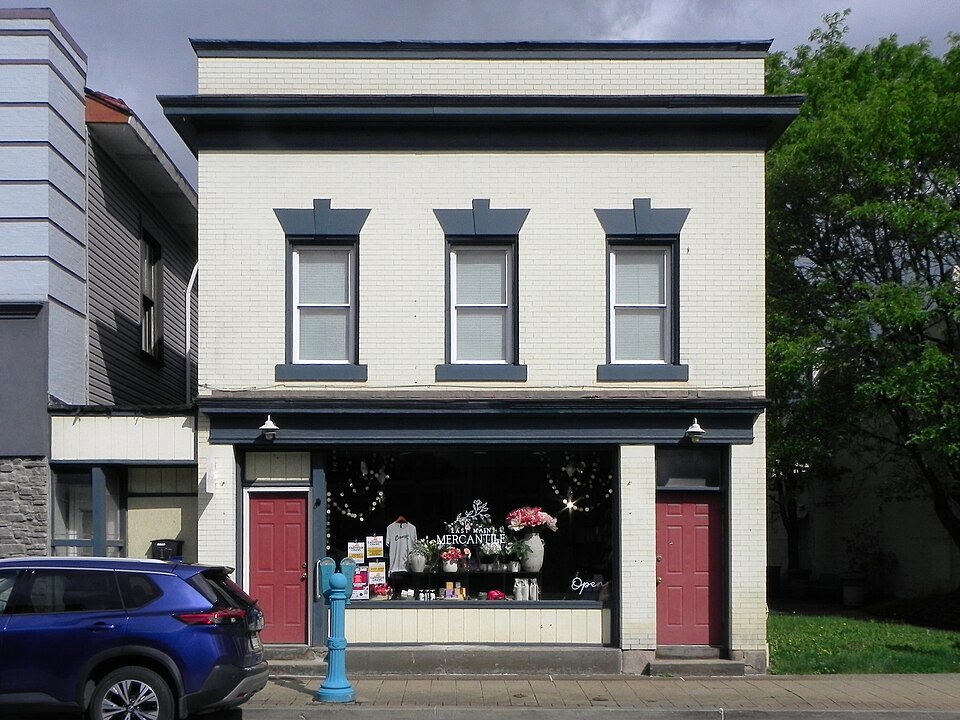
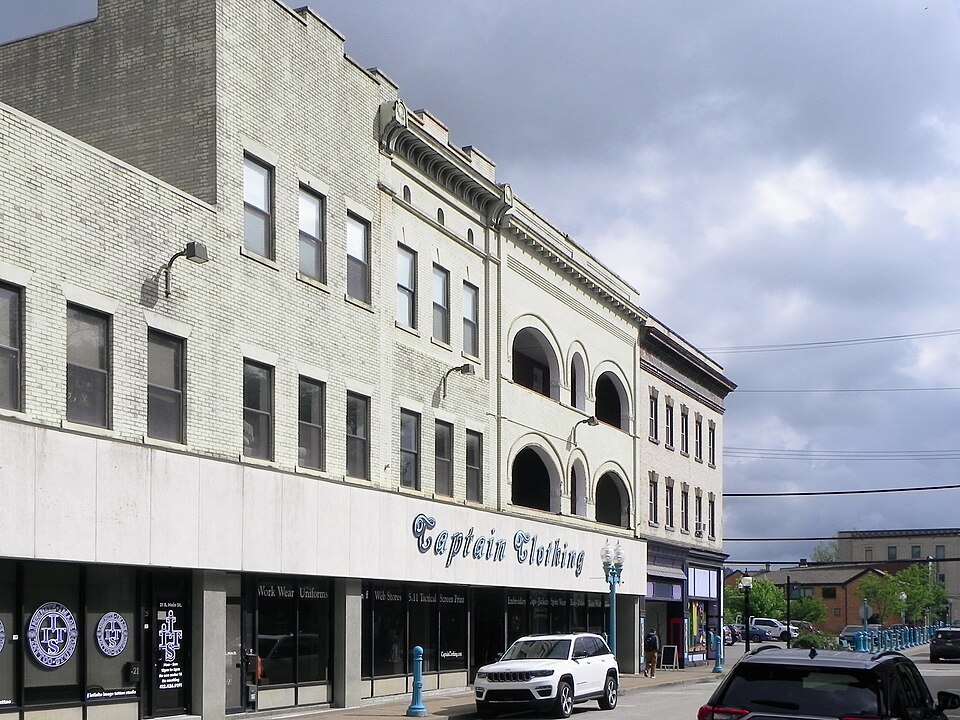
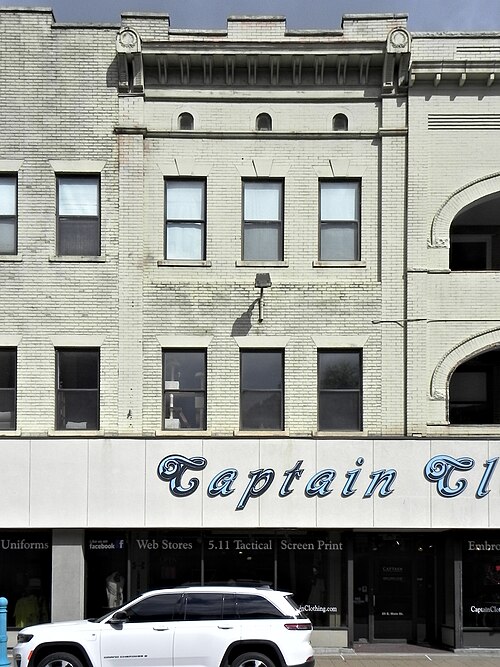
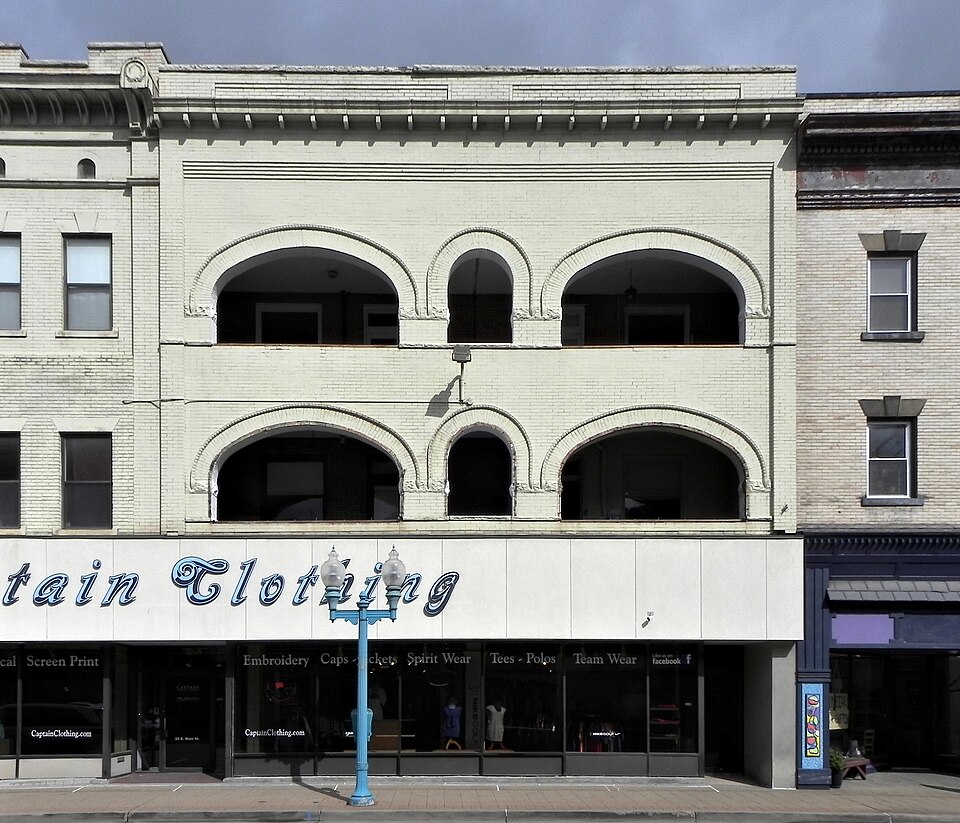
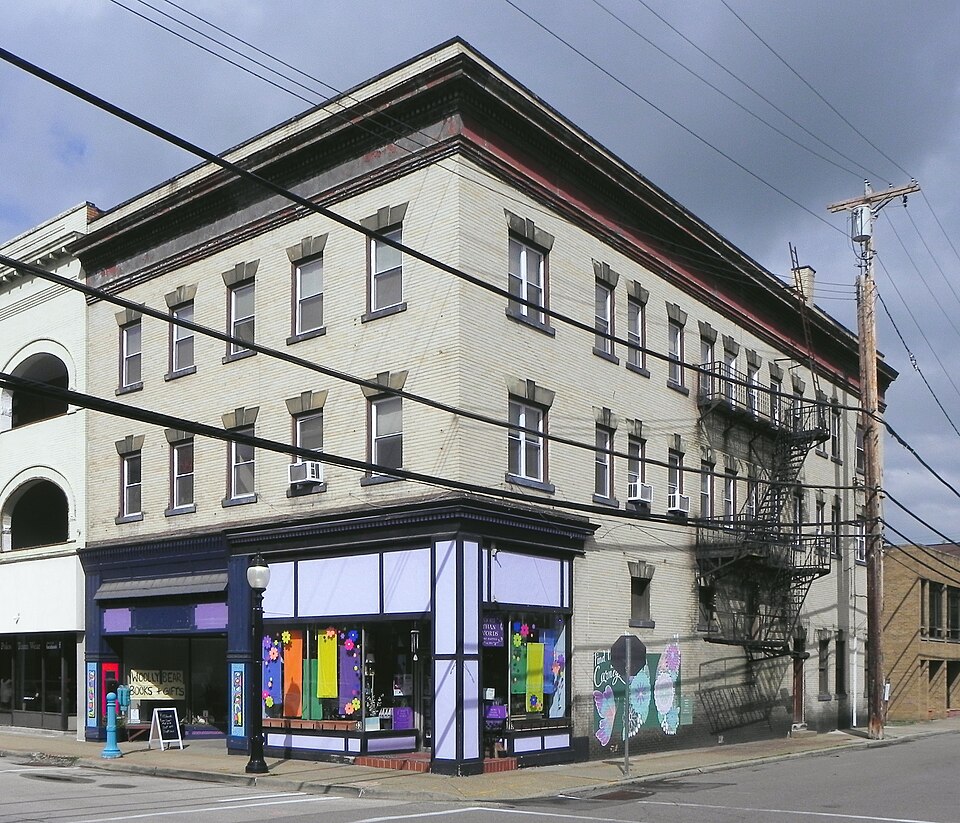
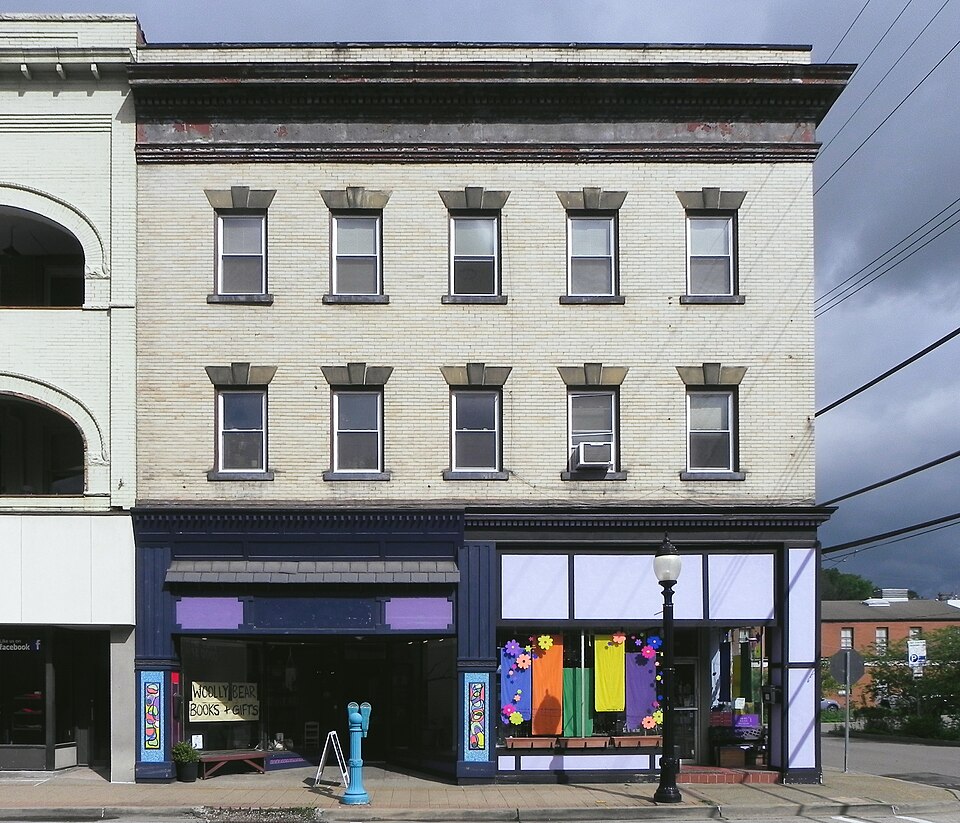
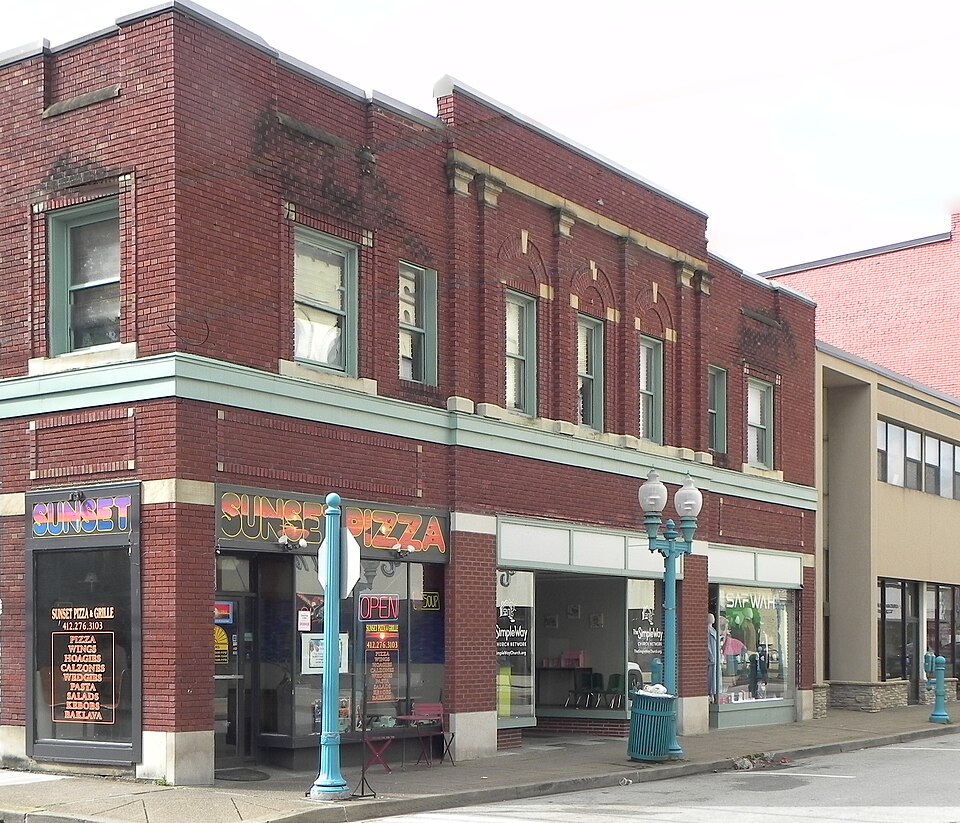
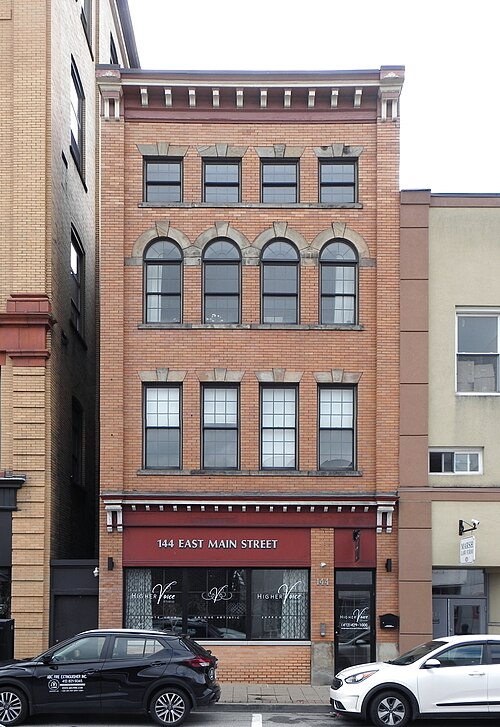

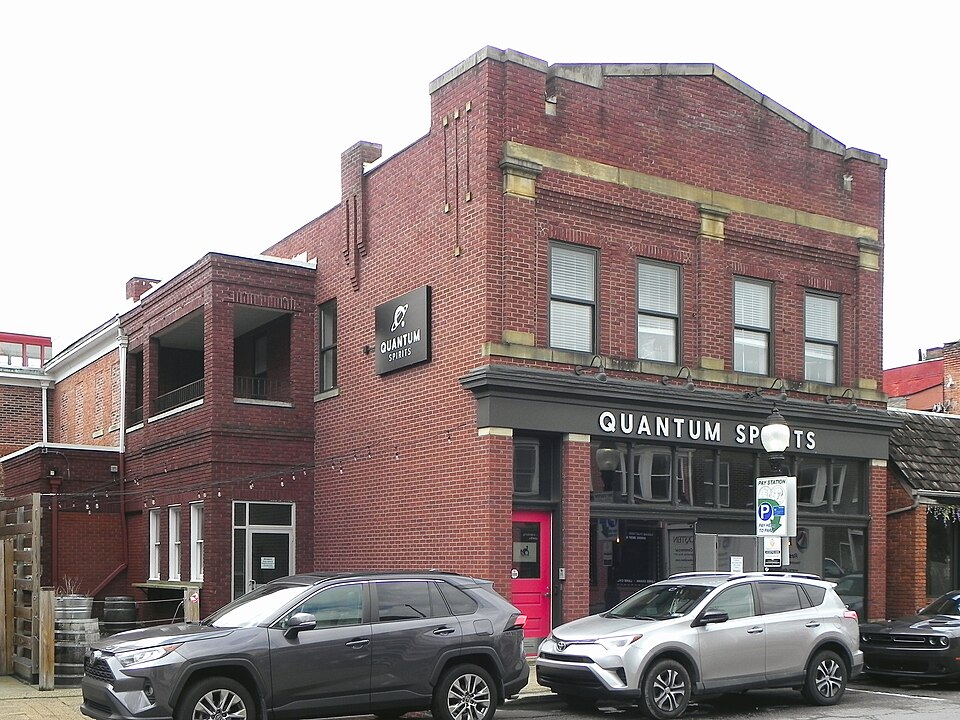
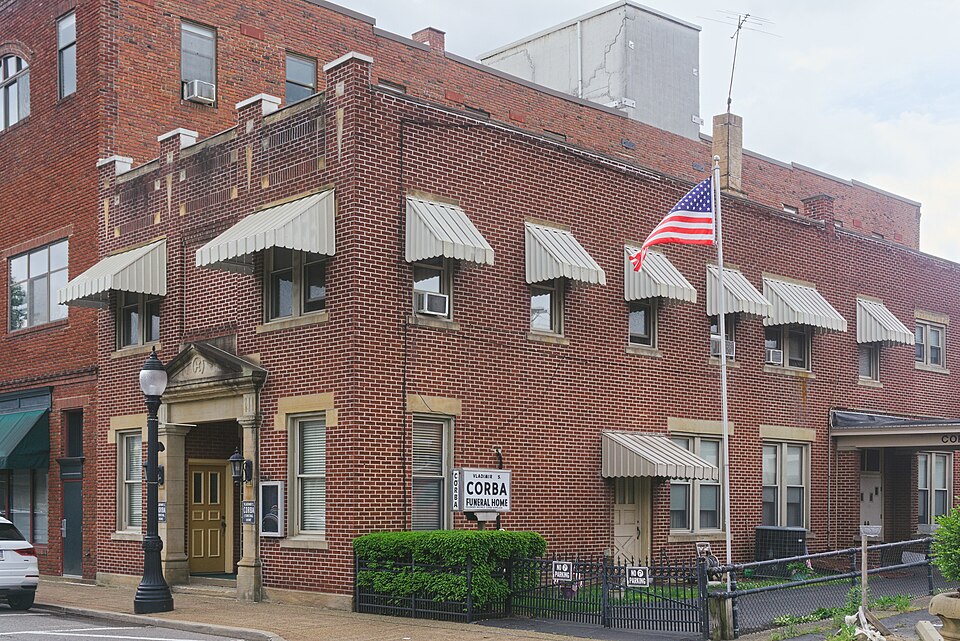


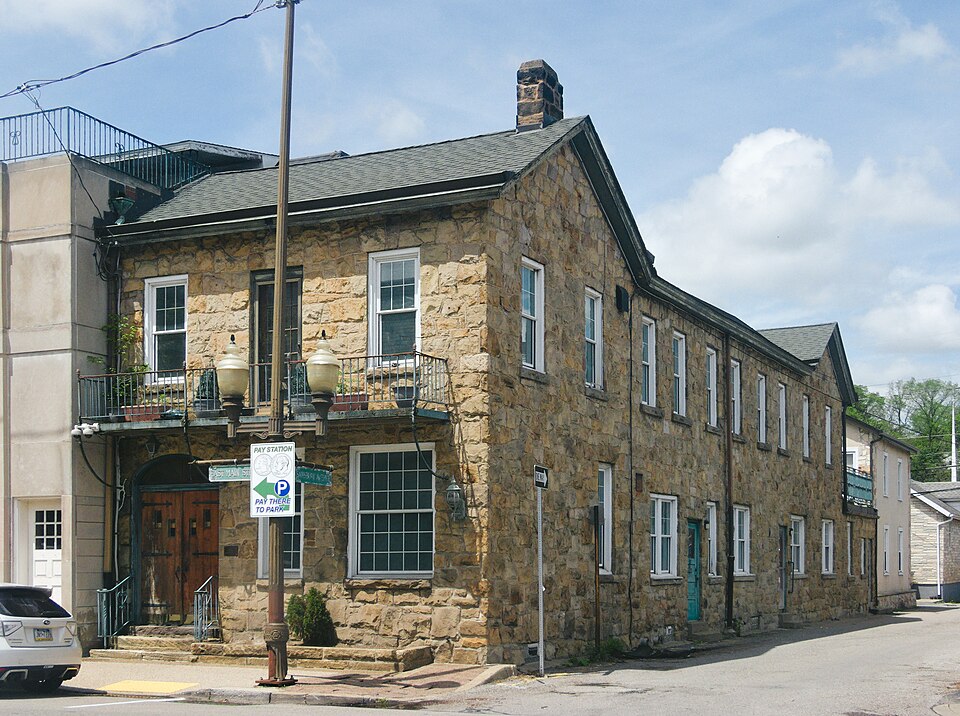
Comments

Main Street in Carnegie has a good assortment of styles from mid-Victorian on. Here we walk up the eastern half of the street, taking in a few of the buildings we haven’t separately noted.














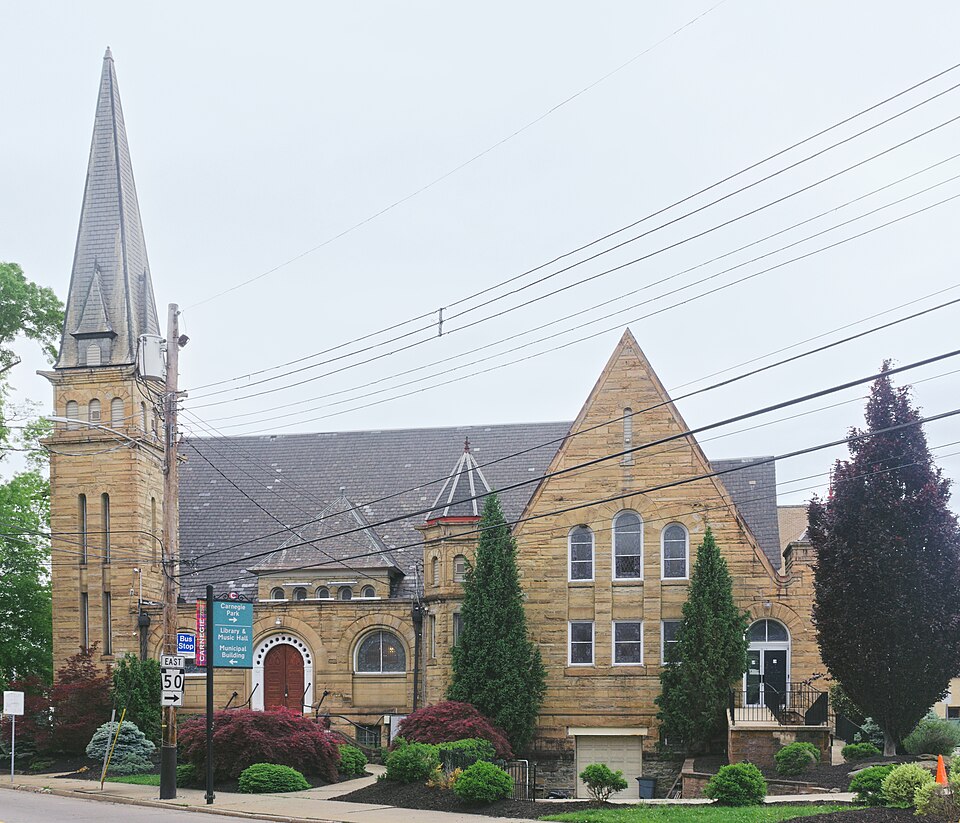
This church, formerly First Presbyterian of Carnegie, now belongs to the Attawheed Islamic Center, which keeps the building up beautifully and lavishes a lot of attention on the landscaping. We can see from an old postcard from the Presbyterian Historical Society collection (undated, but probably about 1900) that this side of the building has hardly changed at all—except for the improvement in the landscaping. Even the stained glass is intact, since it is not representational and therefore causes no offense to Islamic principles.
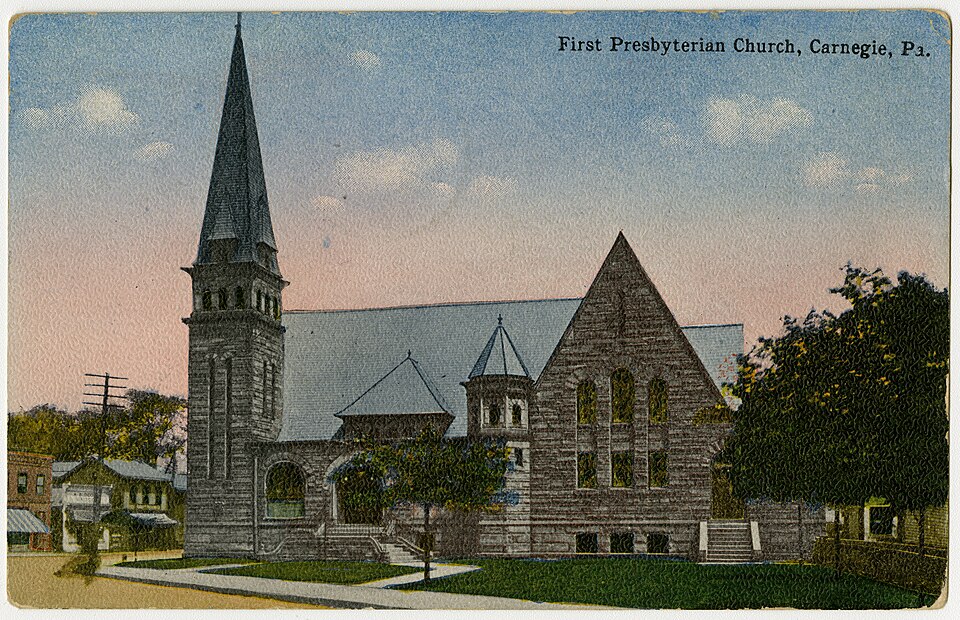
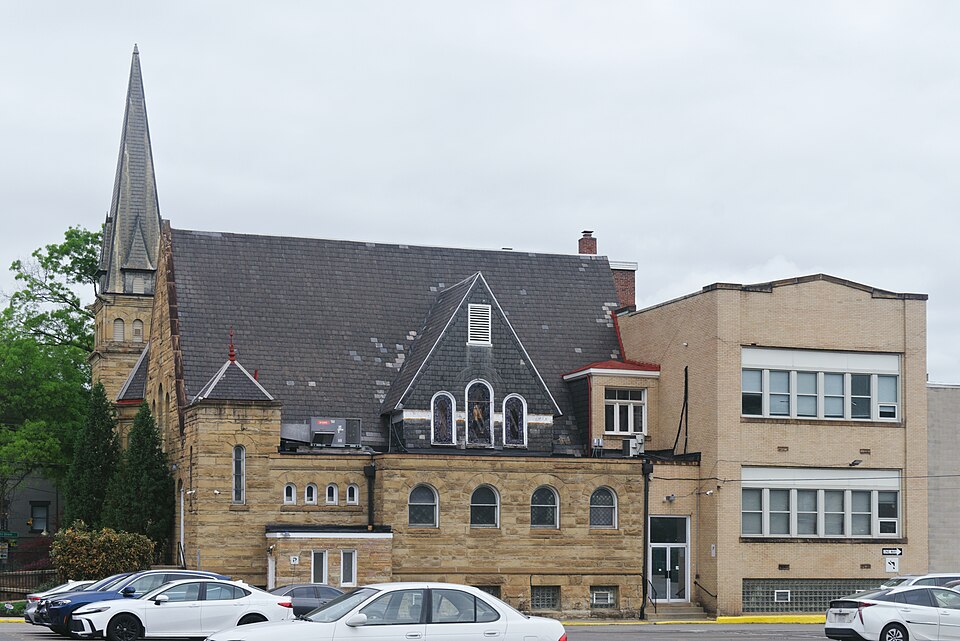
At least two layers of educational buildings are behind the church.
Diagonally across Washington Avenue is another Presbyterian church…
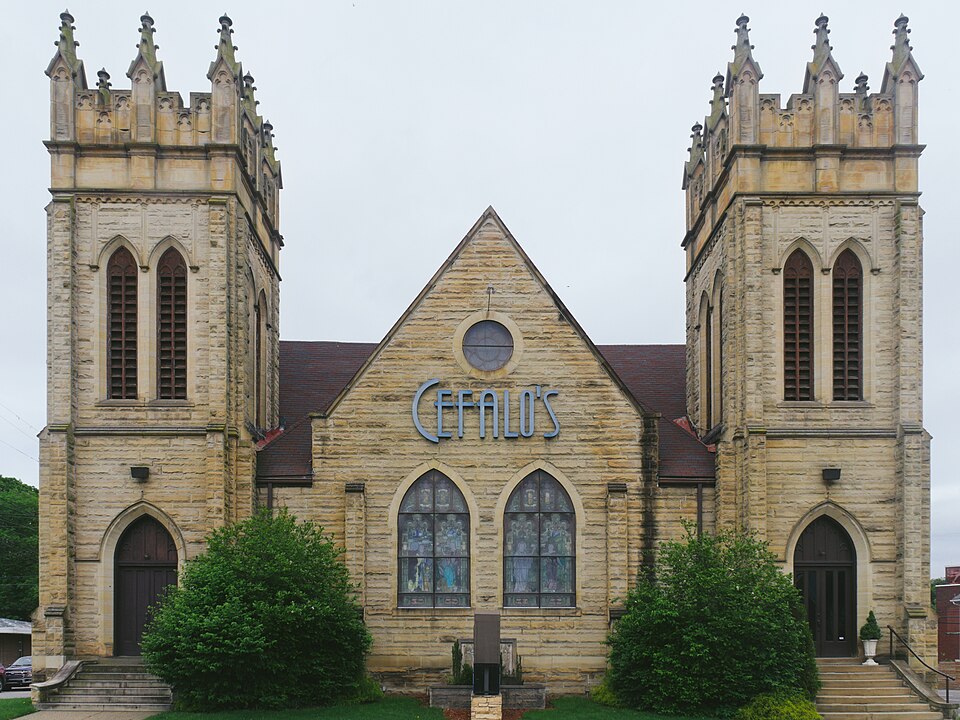
…but this one was First United Presbyterian. The United Presbyterians were a Pittsburgh-based denomination that finally merged with those other Presbyterians in 1958. The building now is used as a banquet hall.
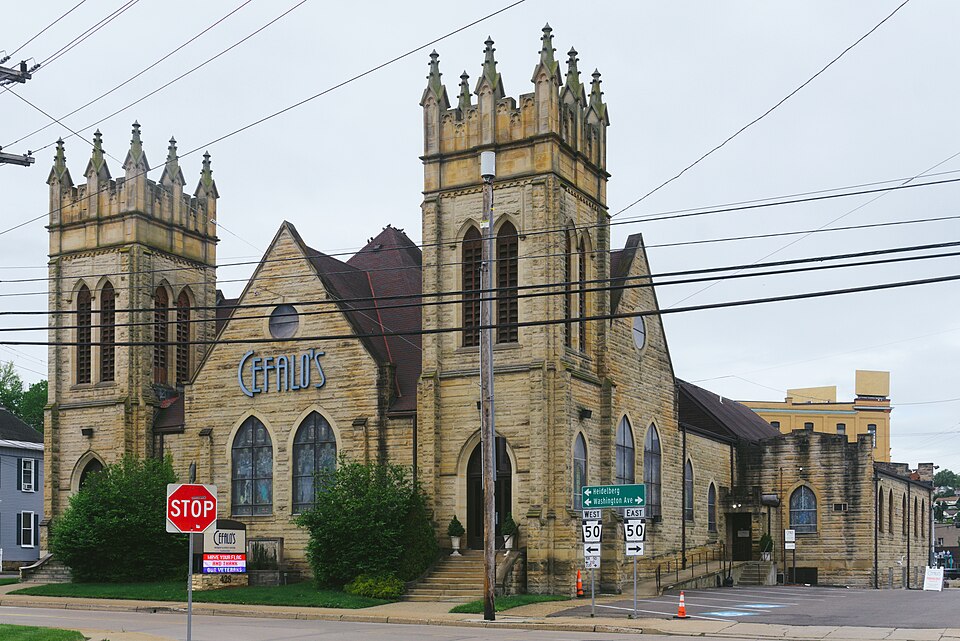
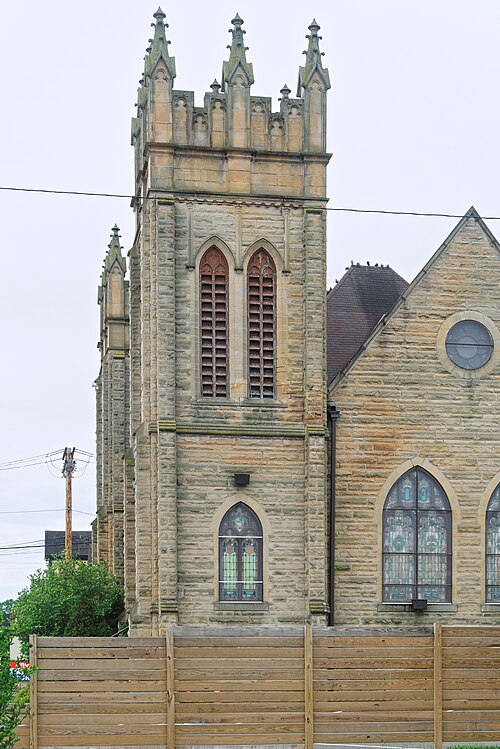



Dedicated in 1931 to veterans of the Great War, this monument, with a new inscription, was rededicated to all who have served their country.


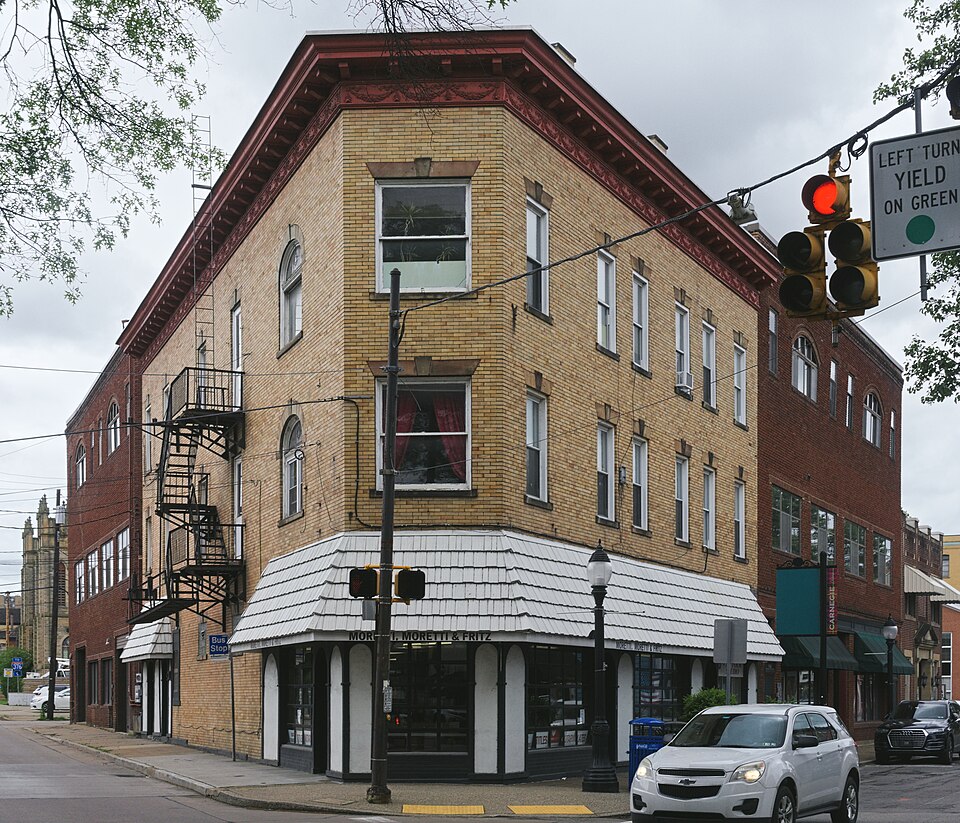
Since we were talking about acute angles, here is a “flatiron” building at the acute angle of the intersection of Main Street and Washington Avenue in Carnegie. Pittsburgh and its surroundings are full of these triangular buildings, because Pittsburgh topography makes it very difficult to lay streets out in a simple grid.


Officially the Andrew Carnegie Free Library, or the Carnegie Free Library by the inscription over the door, but the name “Carnegie Carnegie” is obvious and irresistible and adopted for the library’s Web site.
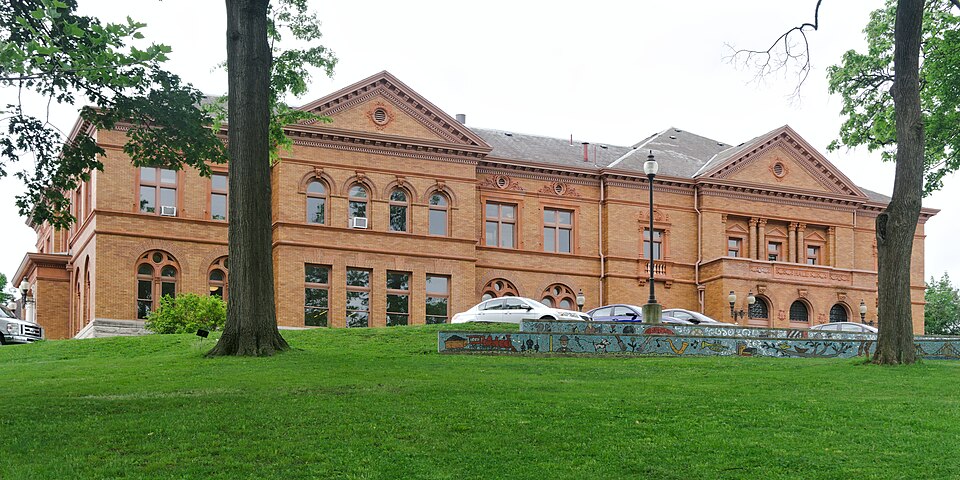
When the two Chartiers Valley boroughs of Mansfield and Chartiers merged in 1894, they decided to name the new town Carnegie after what was probably the most familiar name in the Pittsburgh area. In return, Andrew Carnegie gave them the jaw-dropping sum of $200,000 for this magnificent building (designed by Struthers & Hannah), plus money for books and—unusually for Carnegie—an endowment. His usual agreement with towns that took a library from him was that the town must undertake the upkeep, thus making the citizens ultimately responsible for their library; but in a few steel towns (where we suppose he felt more personally responsible) he endowed the library with enough of a fund to keep it going indefinitely.
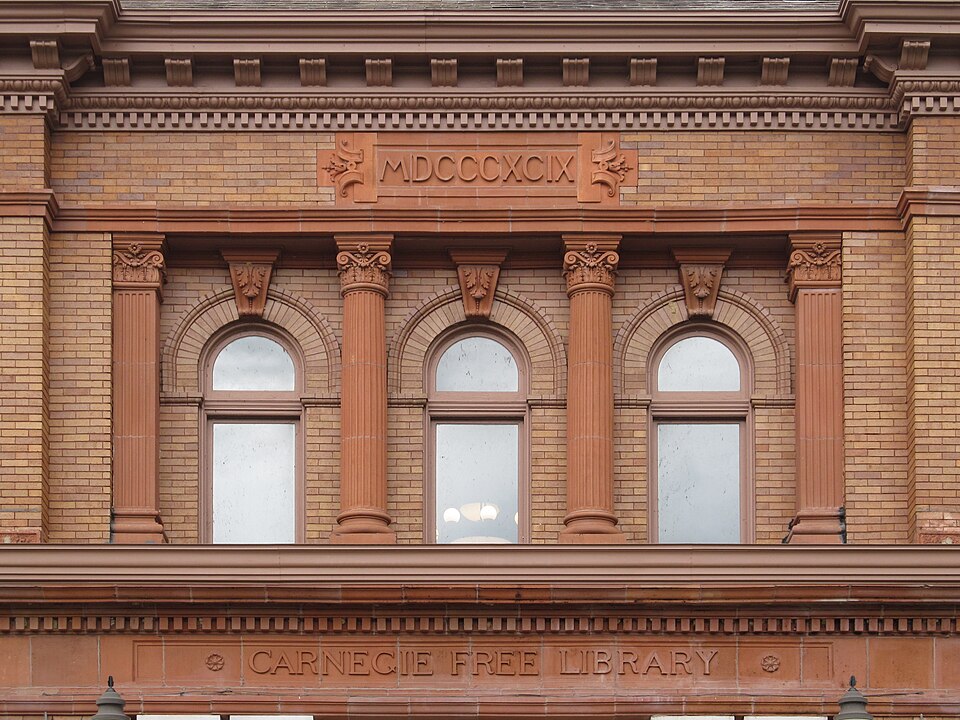

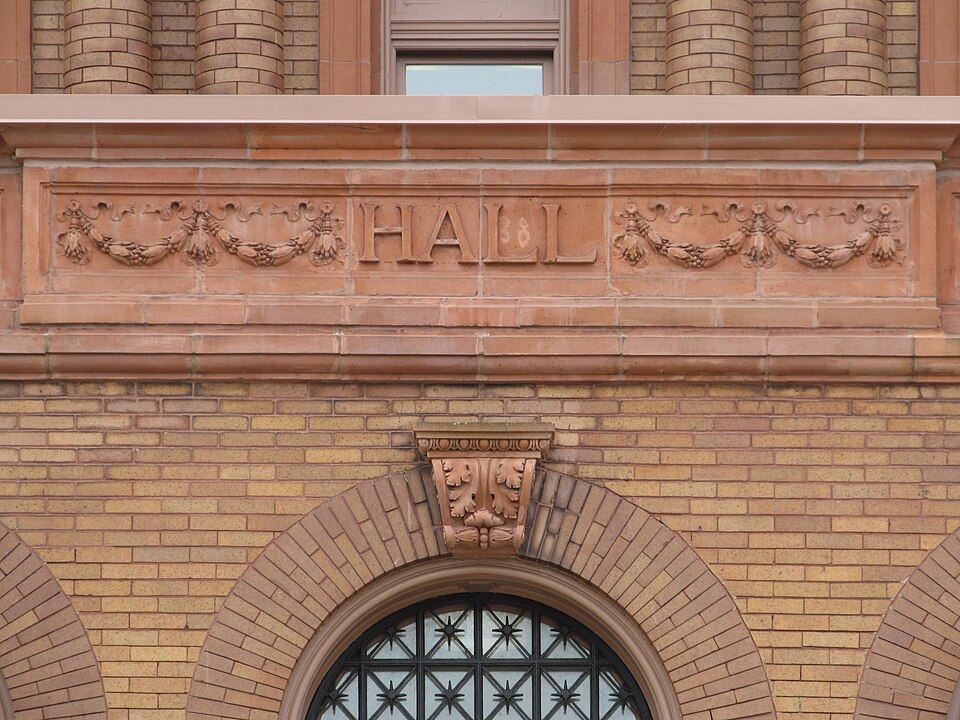
Like Carnegie’s other steel-town libraries, this one was not just a library. It also had a music hall, a gymnasium, and a lecture hall.
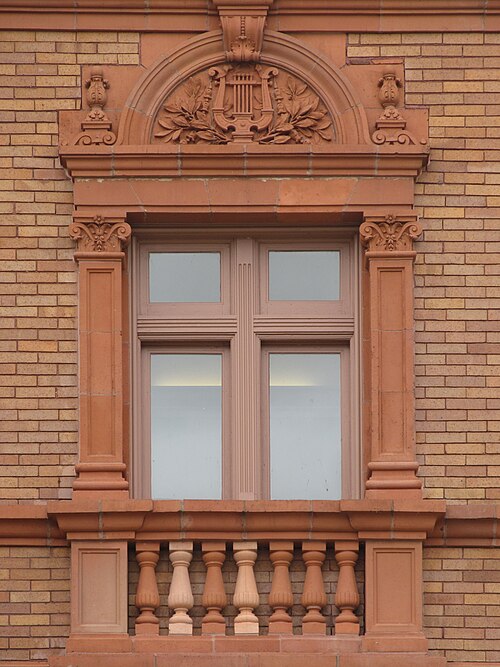
Note the terra-cotta lyre over this window on the music-hall front of the building. Today the music hall is still delighting audiences, and the library sticks to its mission of being a welcoming place to go read a book.
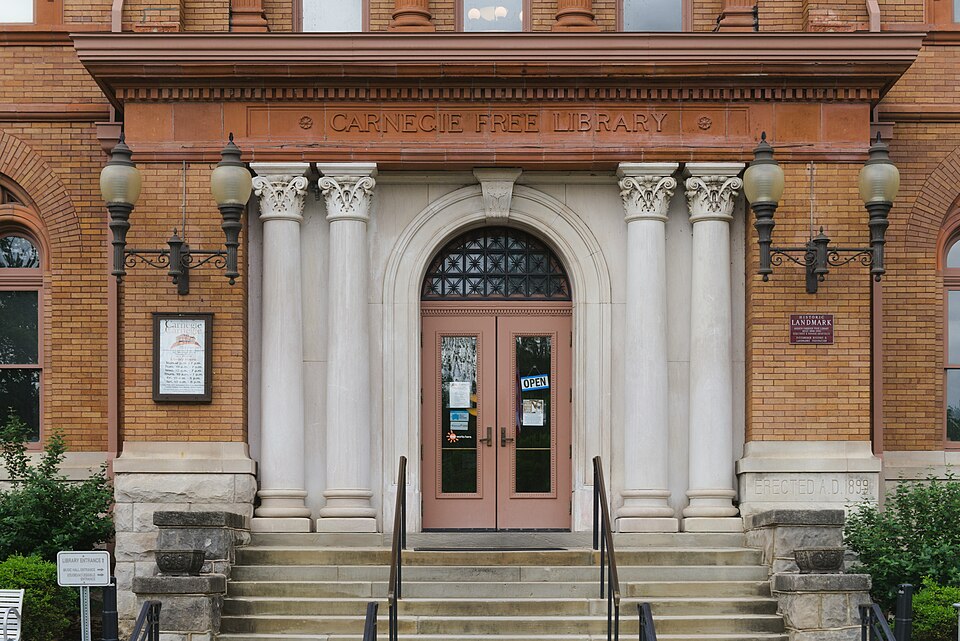
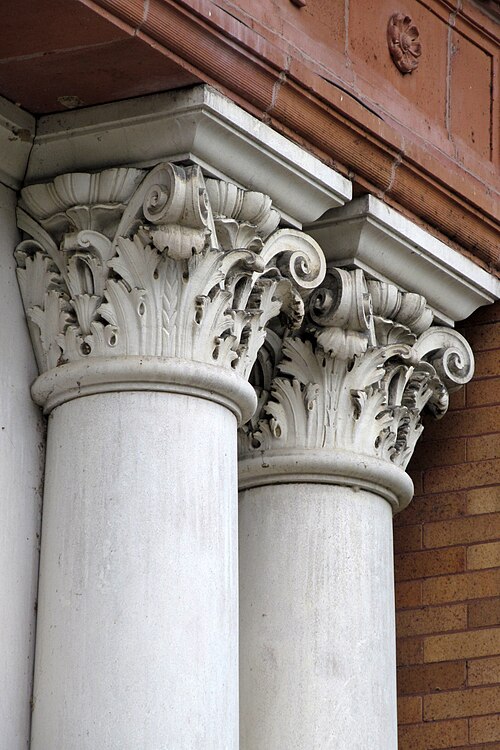
Columns of the Composite order, the most elaborate of the five classical orders, send the message that this is not just a library but a palace for the people.

The lobby lets us know that we have entered a building of unusual richness. Marble panels cover the walls, and mosaic tile decorates the floor.
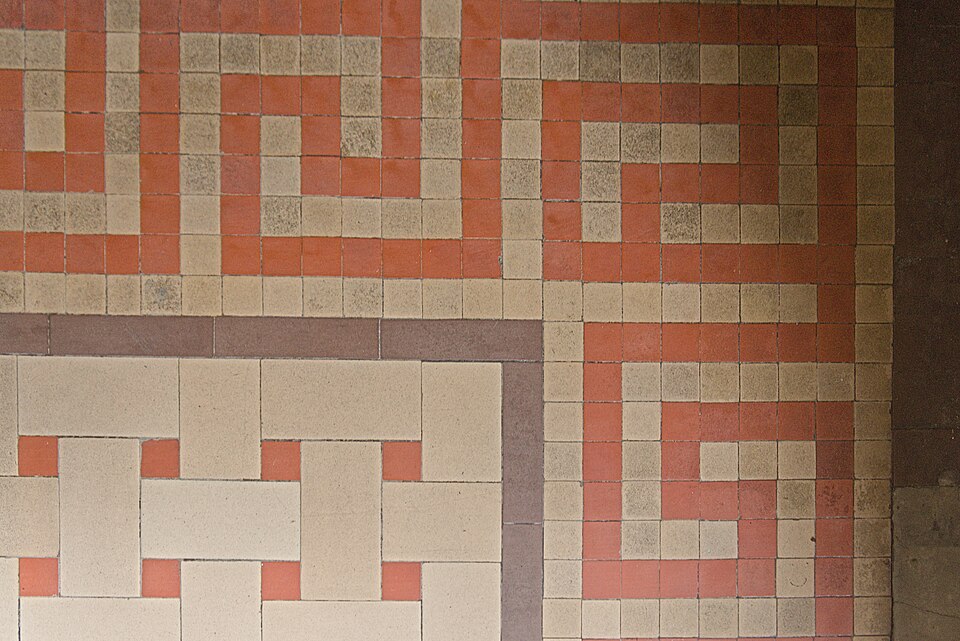

The Greek-key pattern in the tile is repeated in the risers in the stairs.
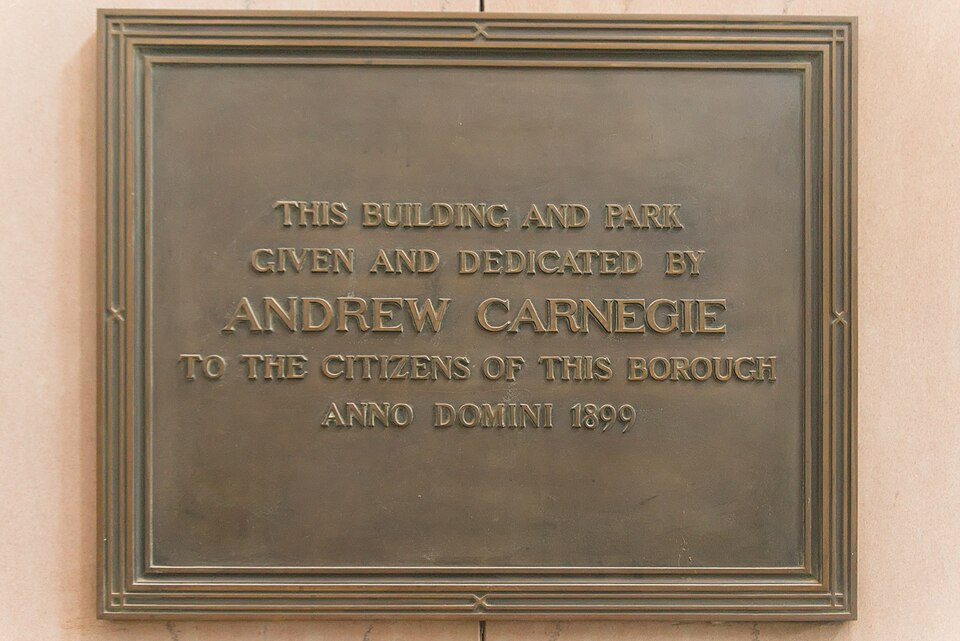
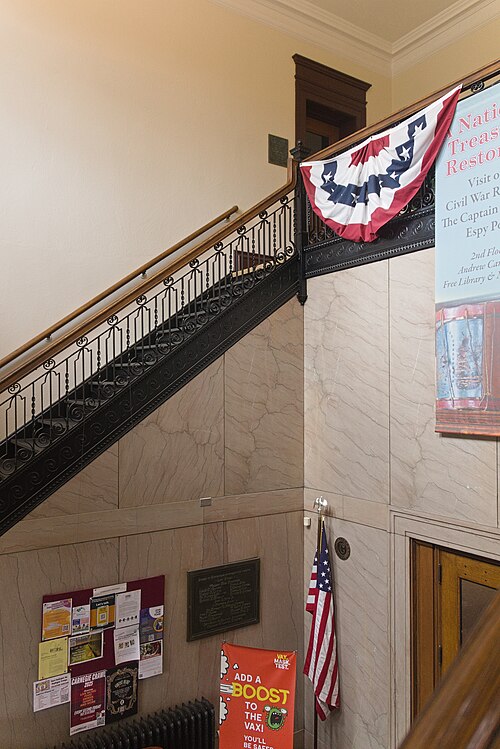
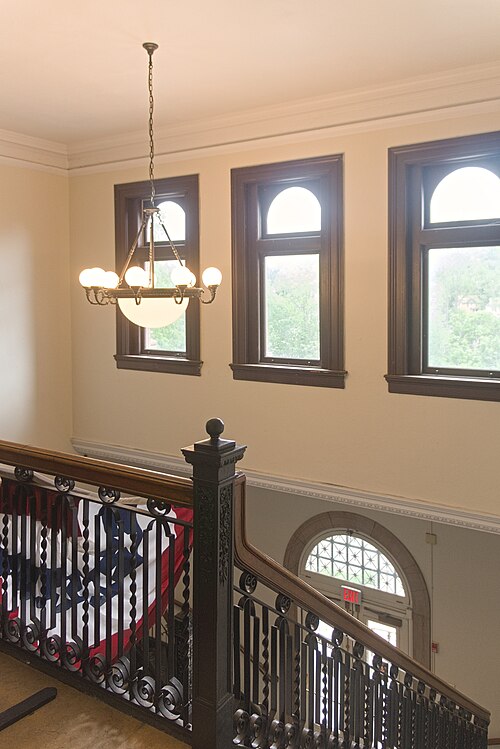
On the second floor of the building is an extraordinarily well-preserved post of the Grand Army of the Republic, and Father Pitt will try to return soon for some pictures of the room.
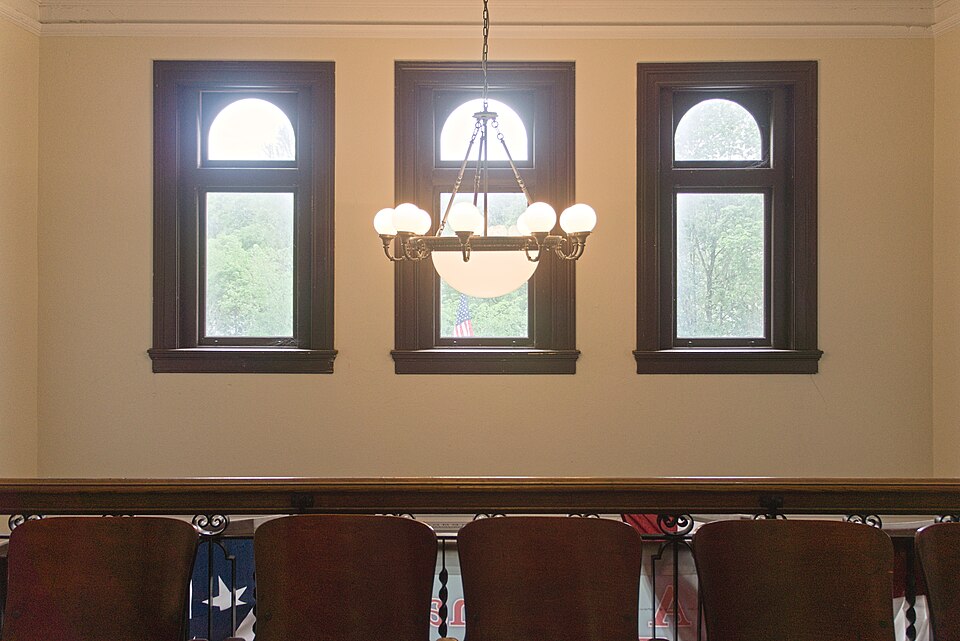
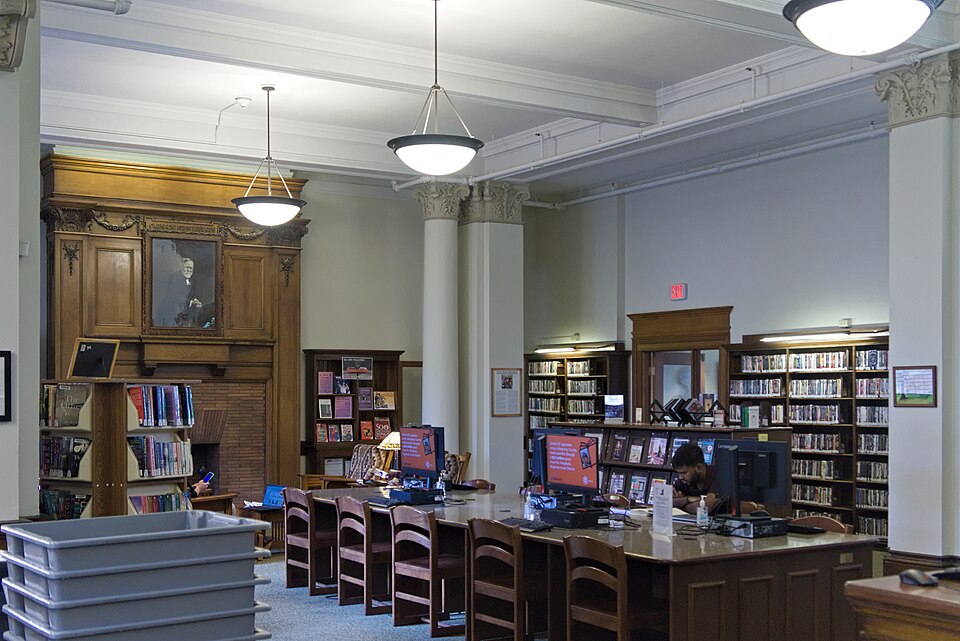
The interior of the library itself mimics the experience of being a rich man with a big library—like old Col. Anderson, whose library was Carnegie’s model. You walked in, sat in front of a big fireplace, and had servants bring you books, and for an hour or two you were just as wealthy as Carnegie himself.
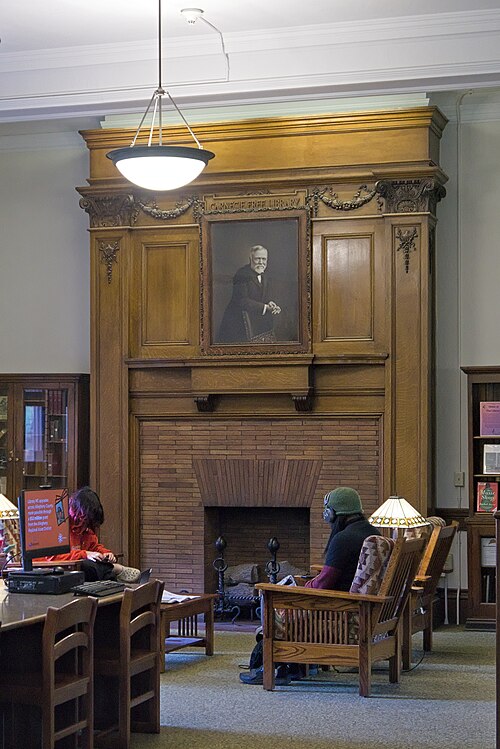
Open stacks have eliminated the servants, but the fireplace is still there, with a familiar face over the mantel.
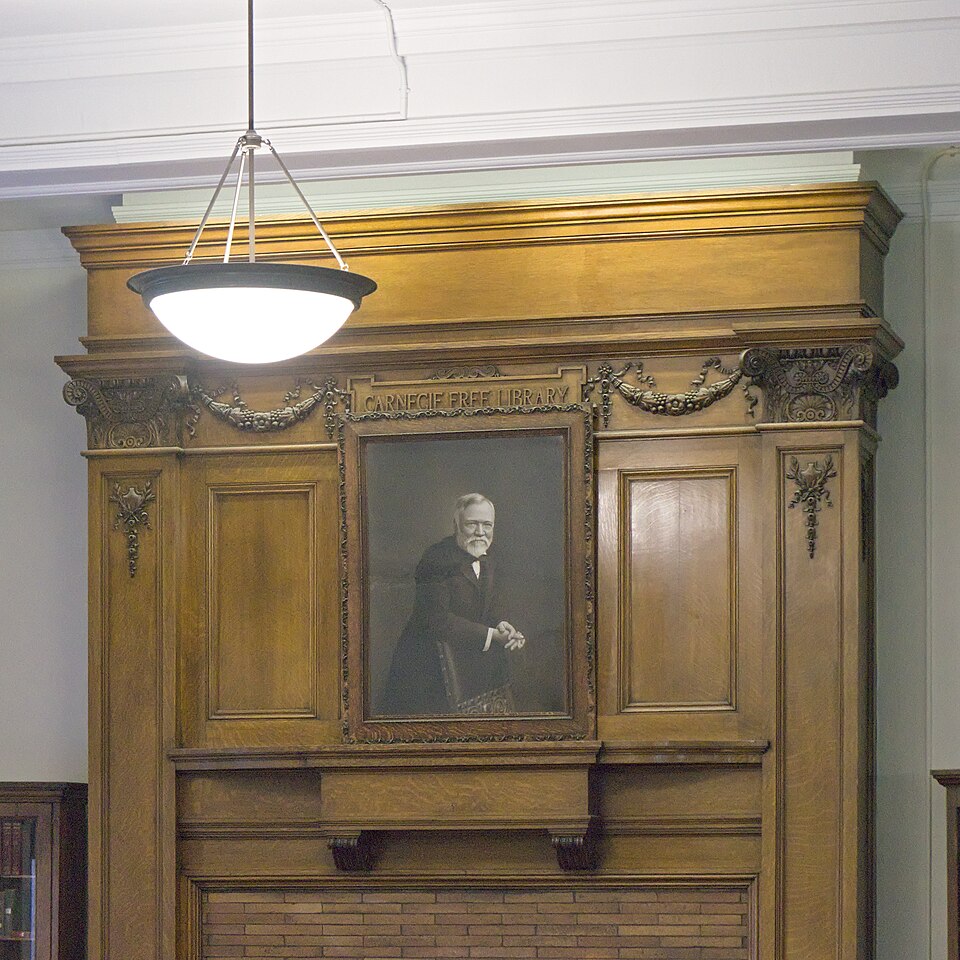
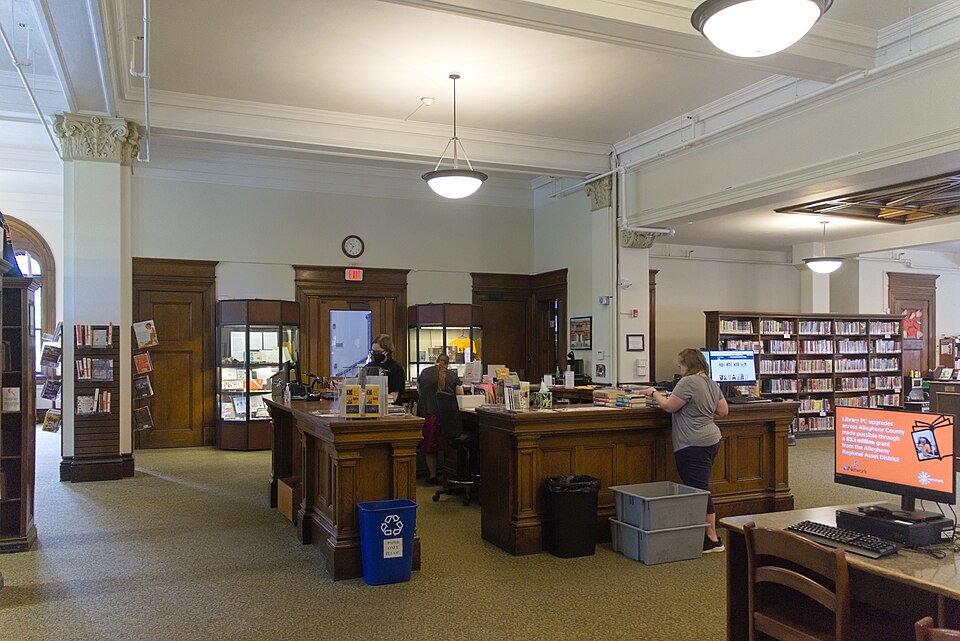

In days of gaslights and low-wattage early electric bulbs, natural light from outside was still important for a reading room. Fortunately no one ever had the money to block up these windows.
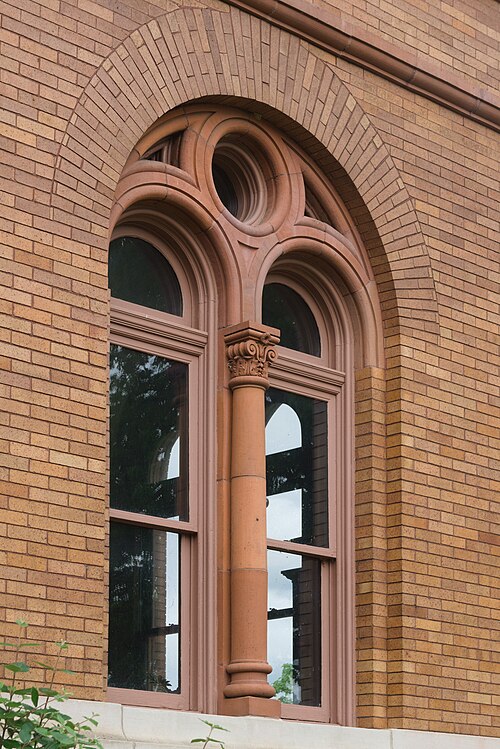
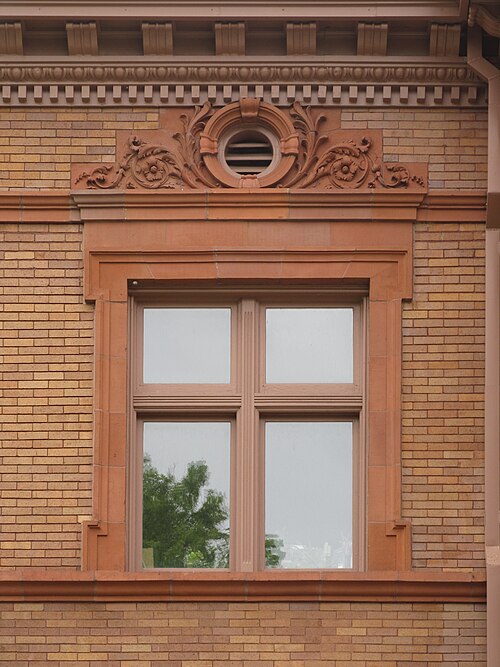
All the windows are surrounded with elaborate terra-cotta decorations.


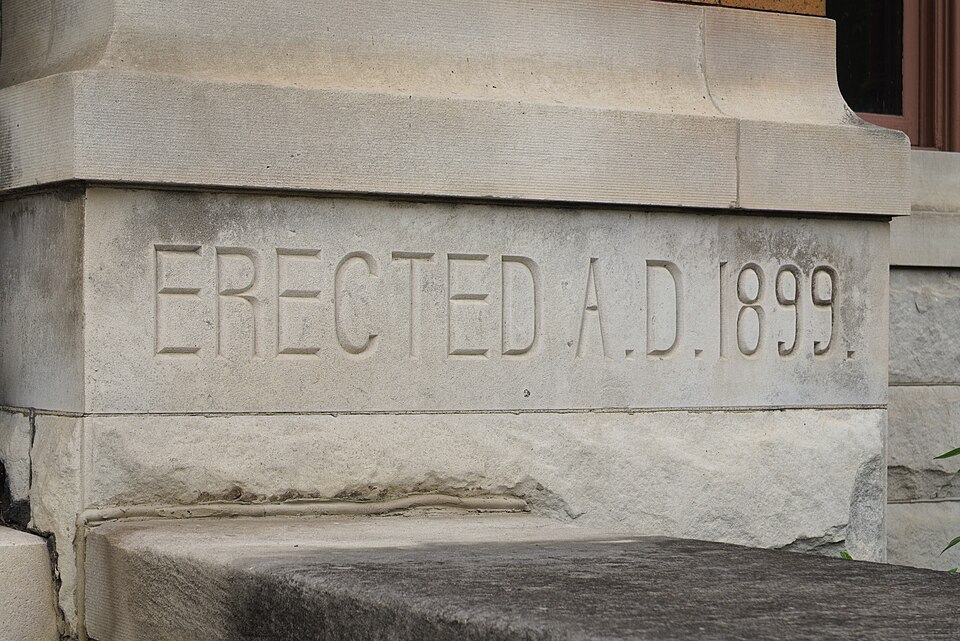
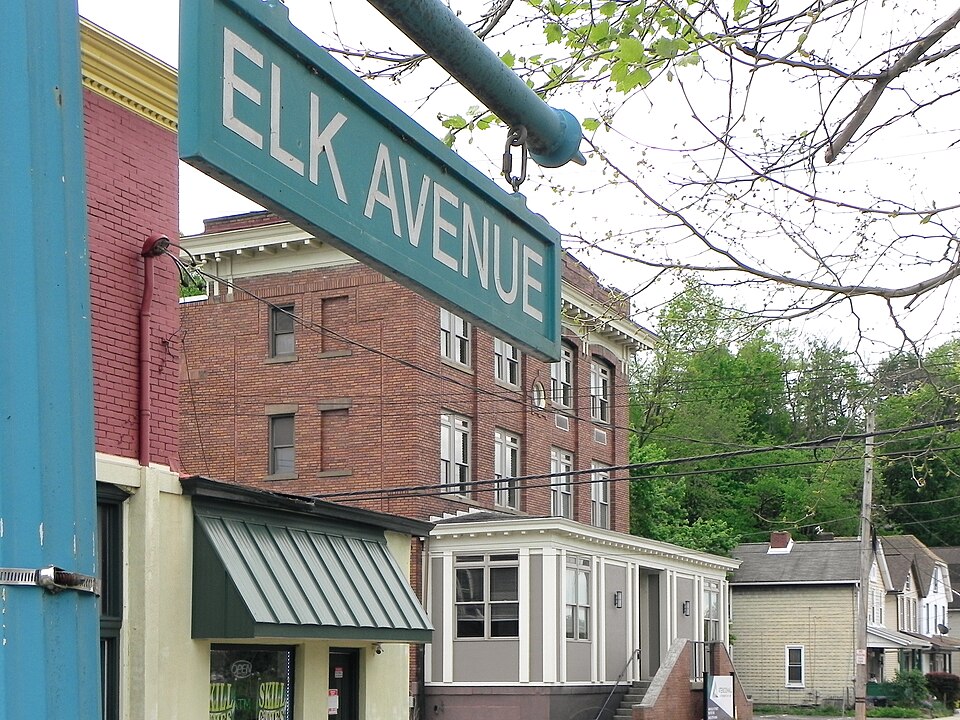
The Benevolent and Protective Order of Elks was one of the most popular organizations in the golden age of lodges; this particular lodge seems to have been influential enough to have the street renamed for it. The same social forces that have diminished our other clubs and our churches have caused many of the Elks Lodges to close, and this building now belongs to a law firm.
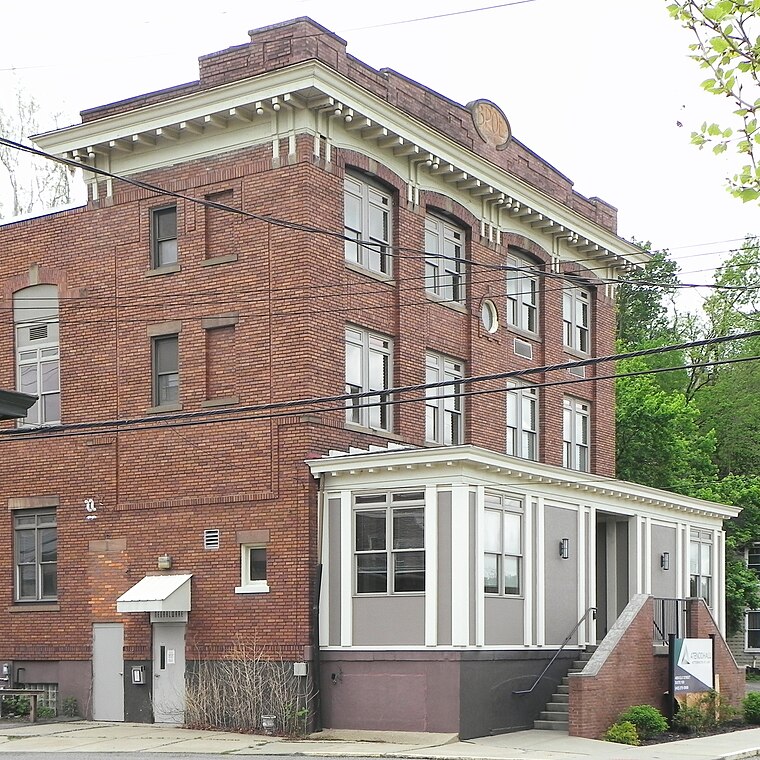
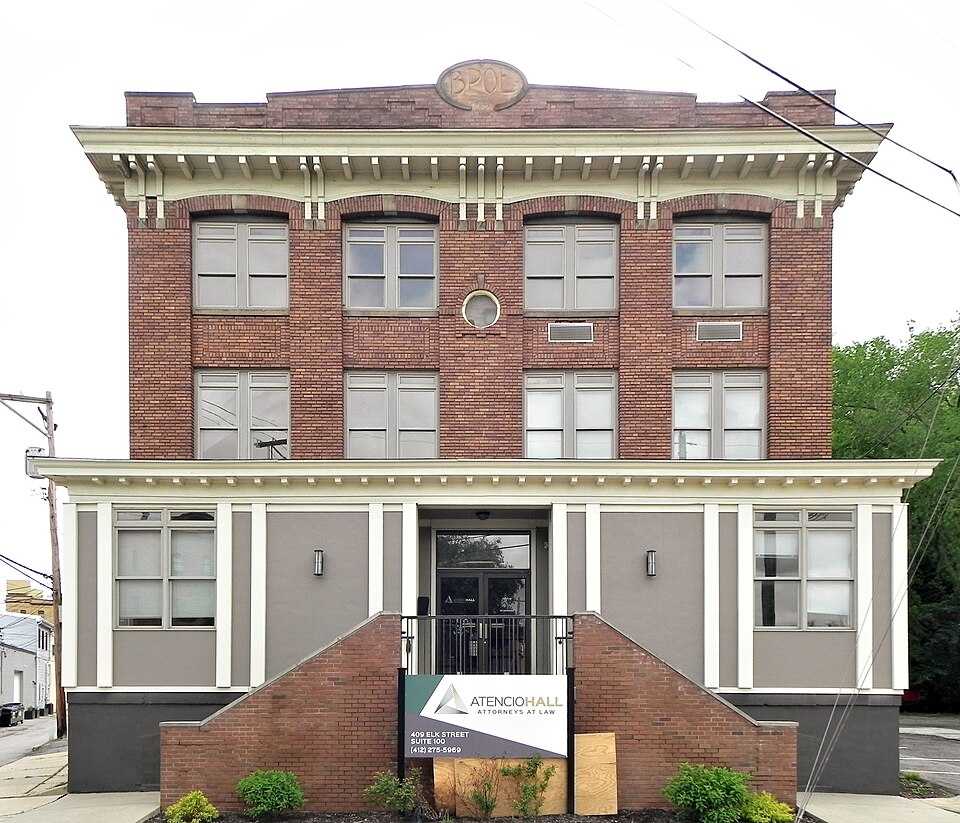
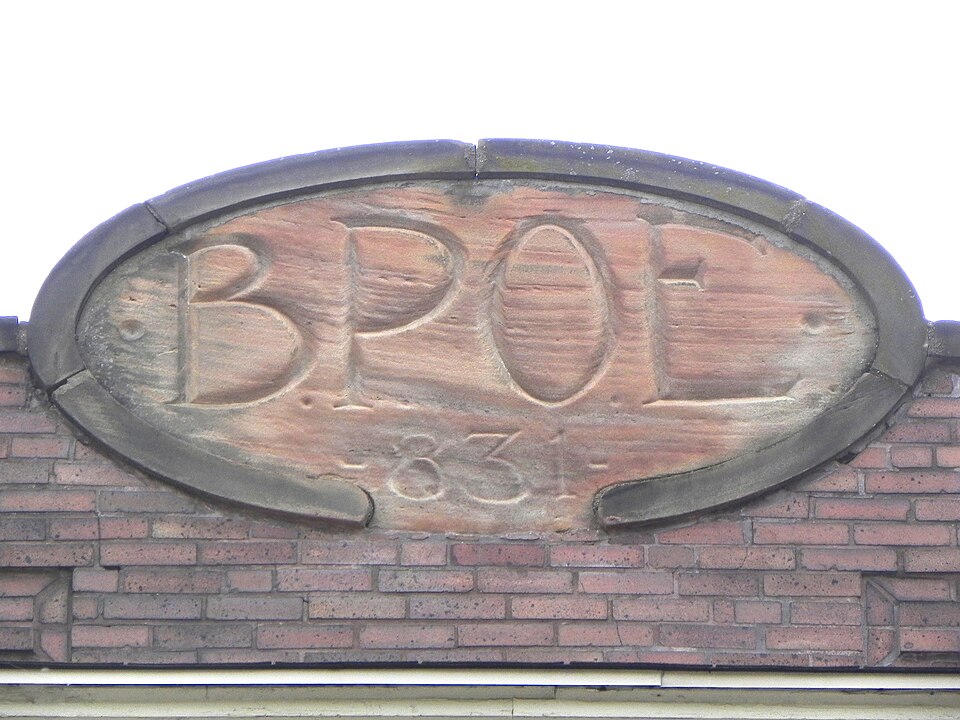
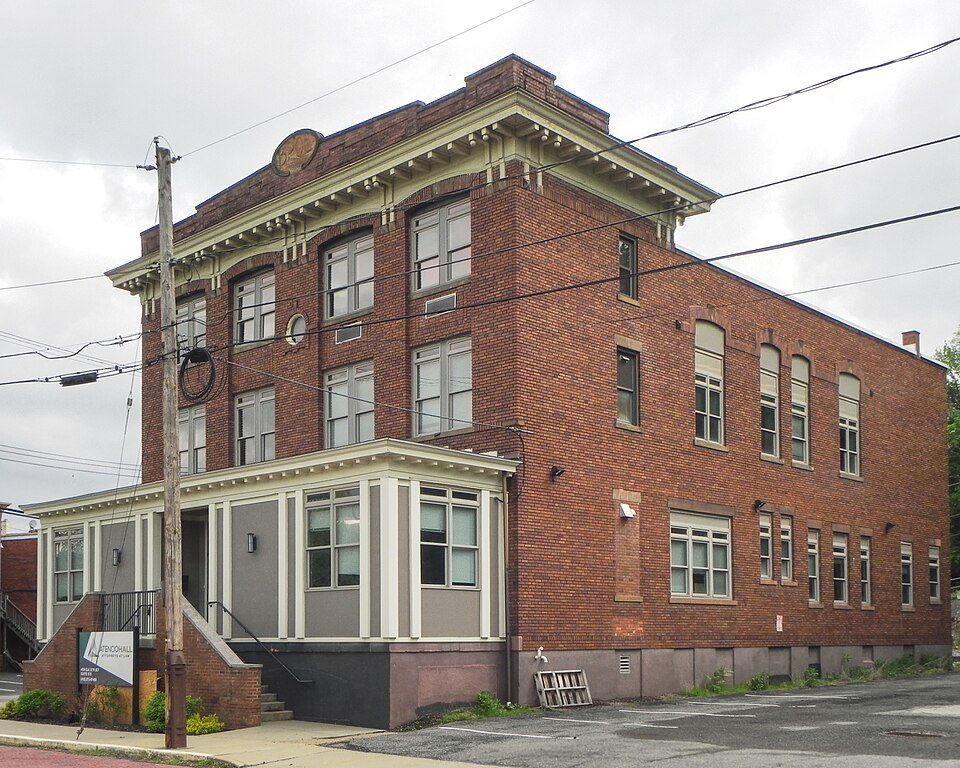
Addendum: The architect was John H. Phillips of McKees Rocks, a prolific designer of schools and other public buildings in suburban boroughs. The lodge was built in 1911 to replace an earlier Elks Temple destroyed by fire. Source: “Proposed Temple of Carnegie Elks,” Gazette, June 18, 1911, where the architect’s rendering is printed.

Paul A. Bartholomew, a Greensburg architect, designed this impressively classical bank, according to his biography in a 1962 American Architects Directory. We’ve seen it before; here are a few more details.
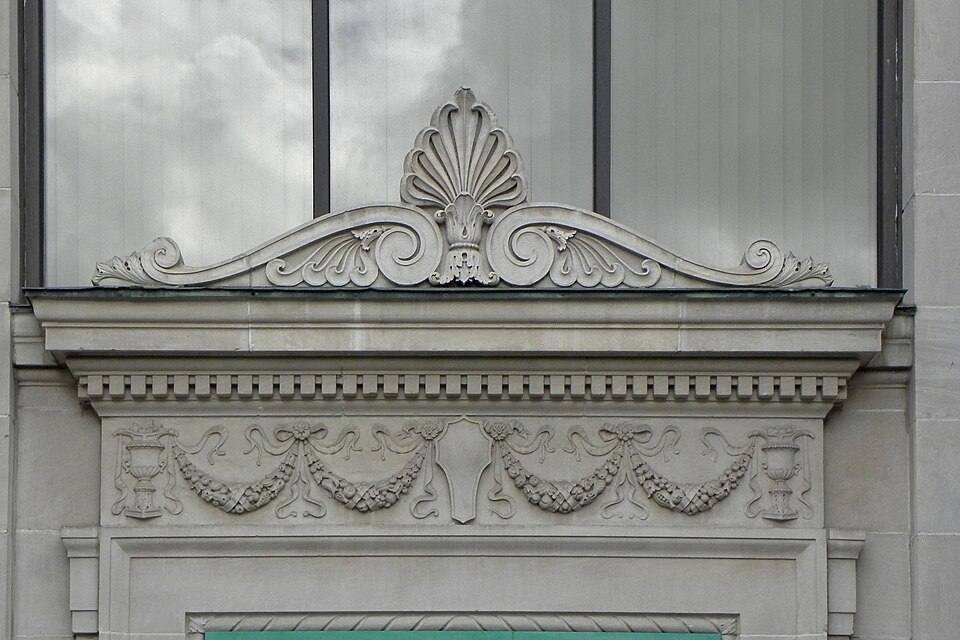



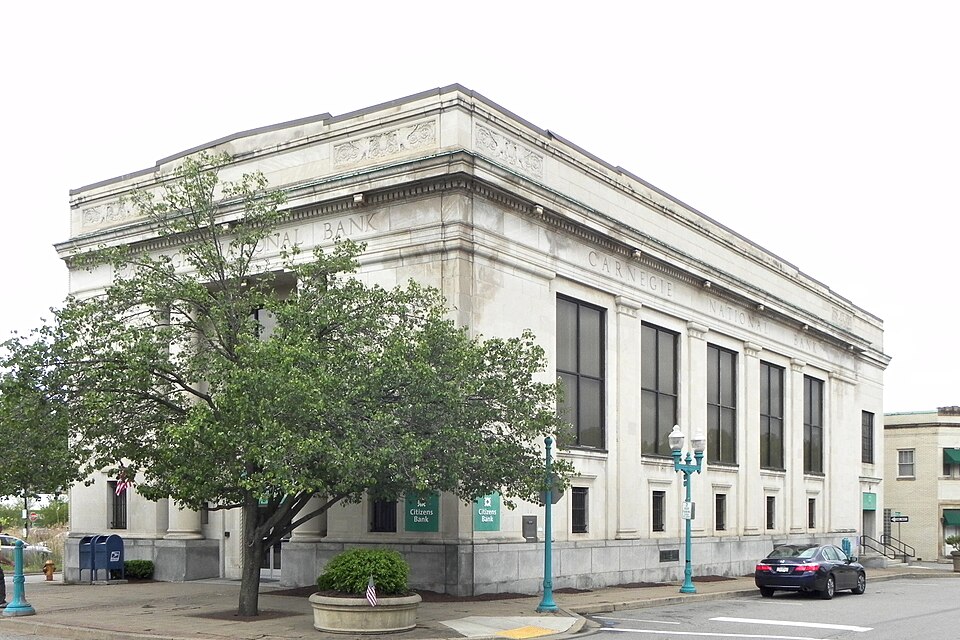

Carnegie is intensely proud of this little tower—so much so that it was recently rebuilt and hoisted up to its perch looking brand new.
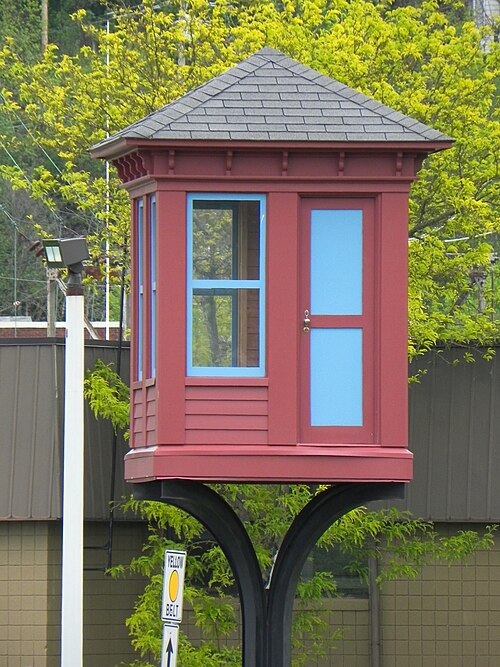
Watch that first step as you leave.
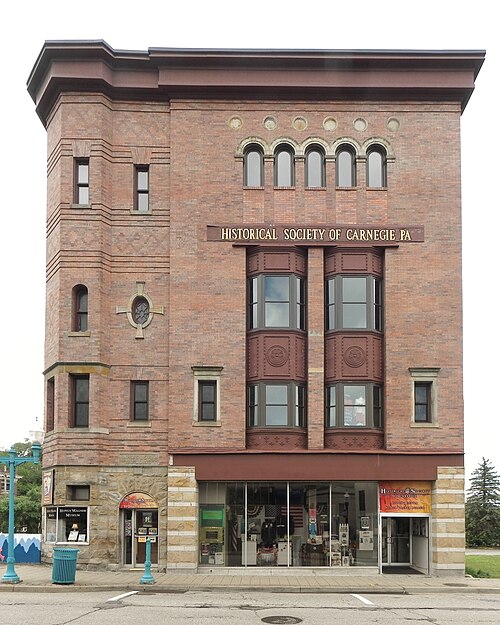
Samuel T. McClarren, a very successful Victorian architect and a resident of nearby Thornburg, designed this landmark building, which was put up in 1896.
A small alteration to the front gives us an example of how important the little details are to the appearance of a building. The arched windows in the top floor have been shortened, as we can see by the slightly different shade of brick where they have been filled in. The original design would have created a single broad stripe from the arches at the top to the storefront below. Interrupting that composition makes the building look awkward and top-heavy. The ground floor has also been altered in a way that obscures the vigor of the design. Once we have said that, however, we should acknowledge that the building is generally in a good state of preservation and praise the Historical Society of Carnegie for keeping it up.
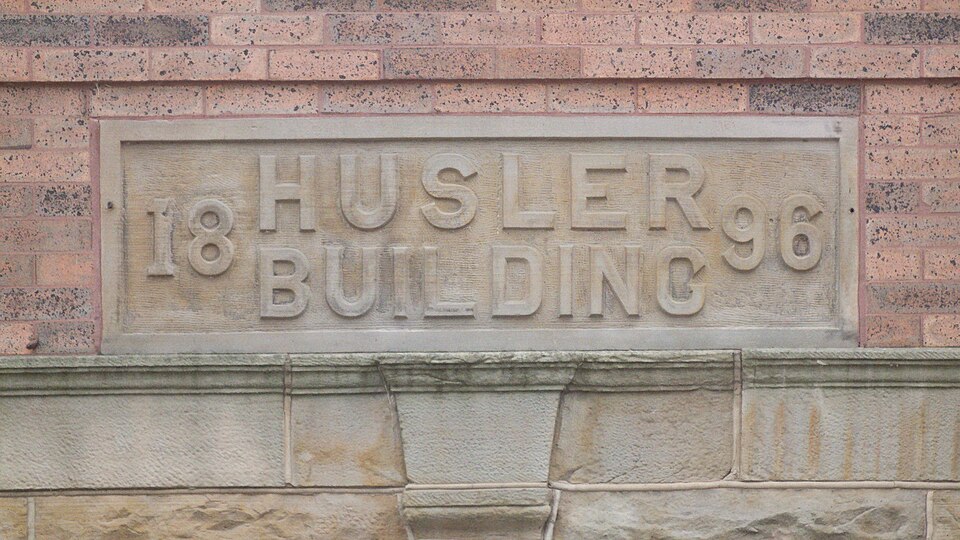
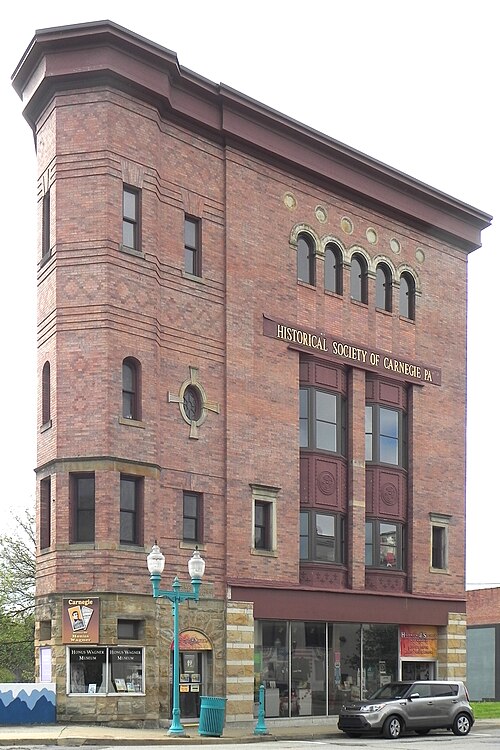
This building has a very difficult lot to deal with, and the architect must have found it an interesting challenge. First, the lot is a triangle. A kind of turret blunts the odd angle on the Main Street end and turns it from a bug into a feature.
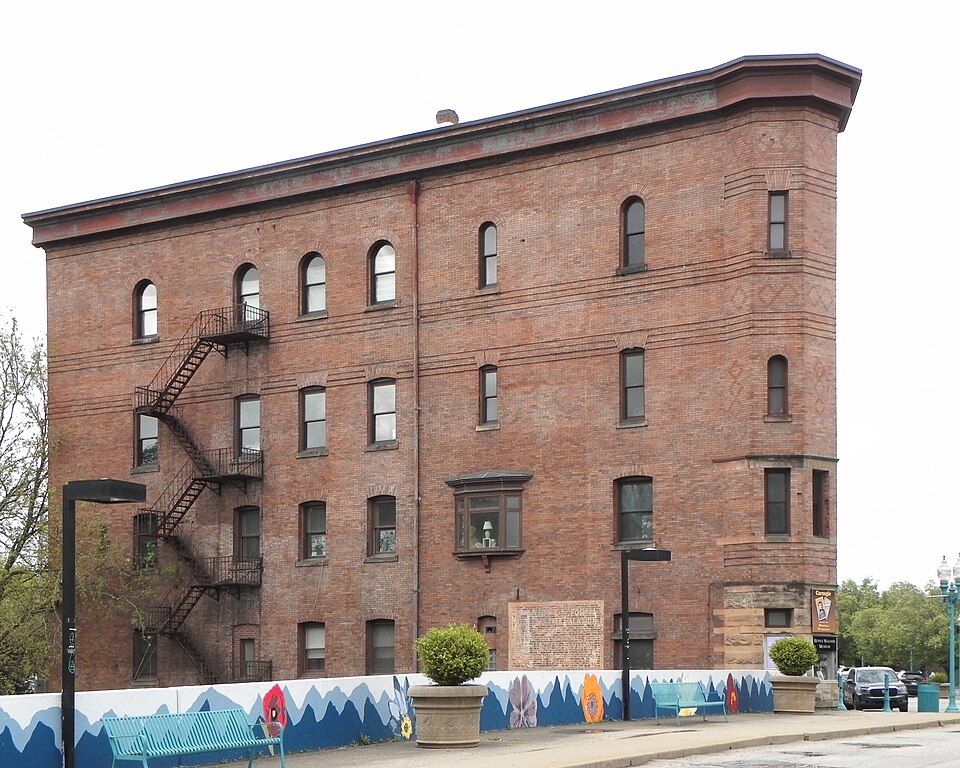
The second challenge is that one long side of the lot is smack up against Chartiers Creek, a minor river that is placid most of the time but can be a raging torrent when storms make it angry. The foundations would have had to take all the moods of the river into account, and the fact that the building has stood through disastrous floods suggests that Mr. McClarren knew what he was up to.
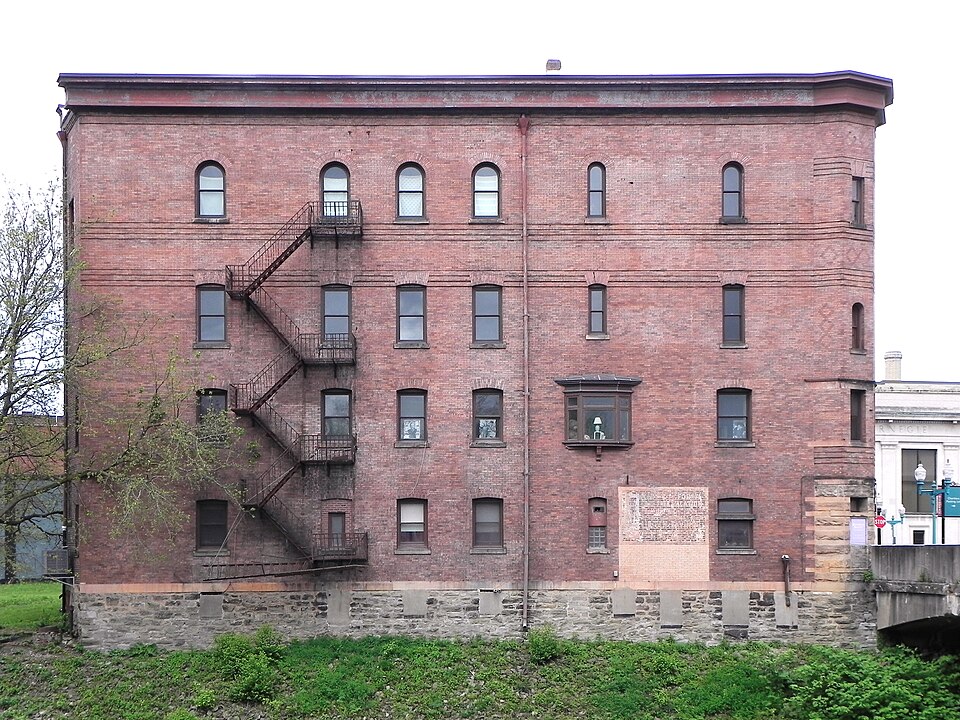
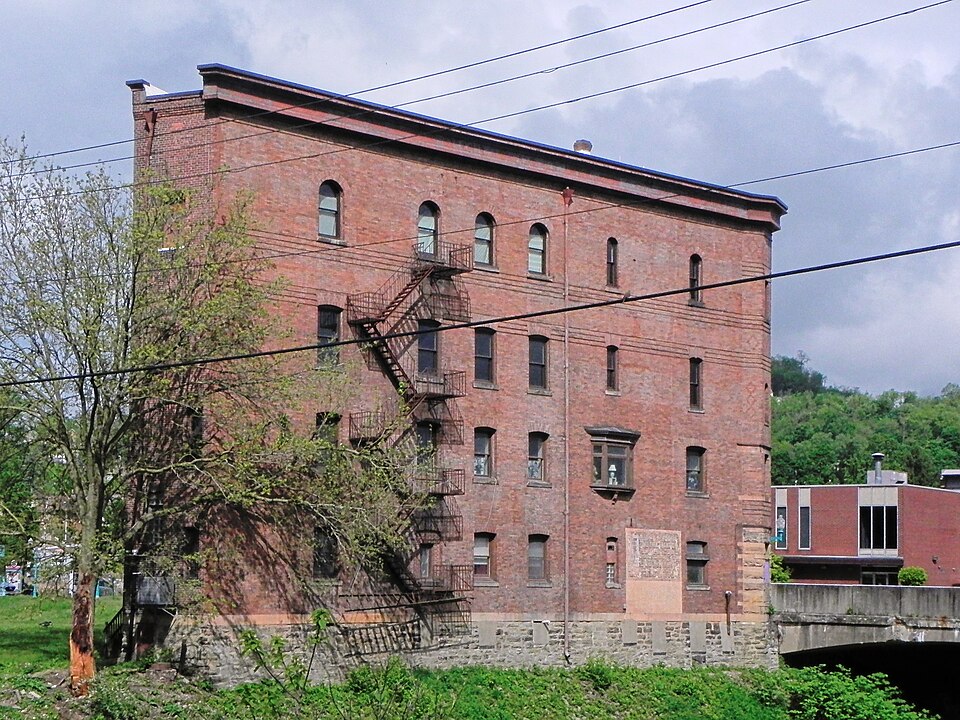
A view from across Chartiers Creek shows us the sharp point of the triangle in the rear.
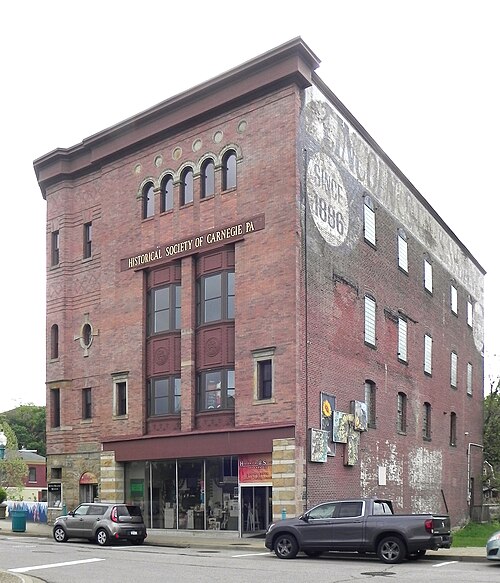
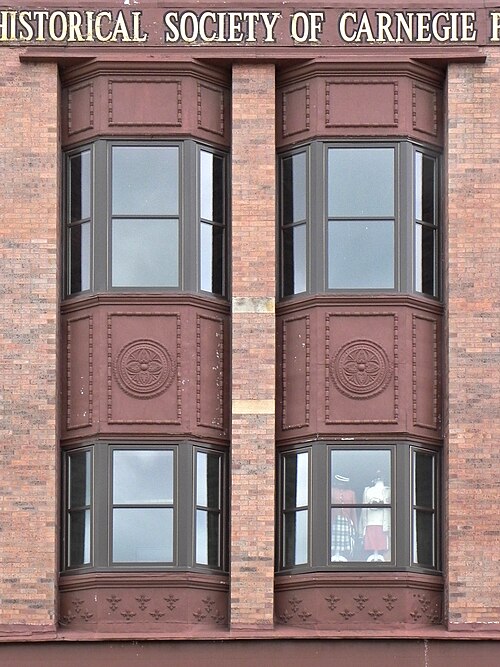
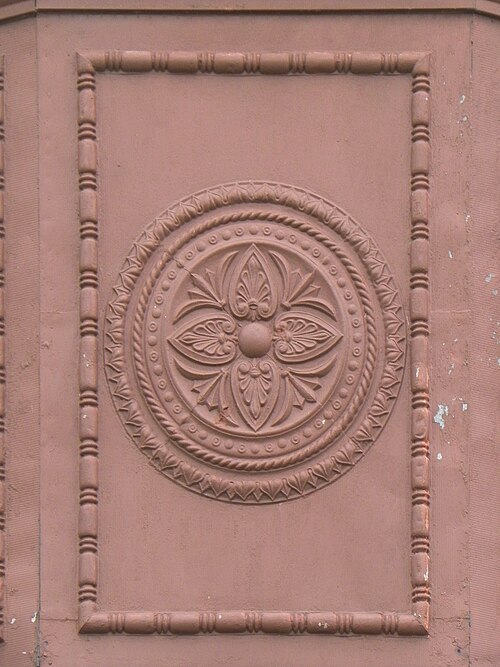
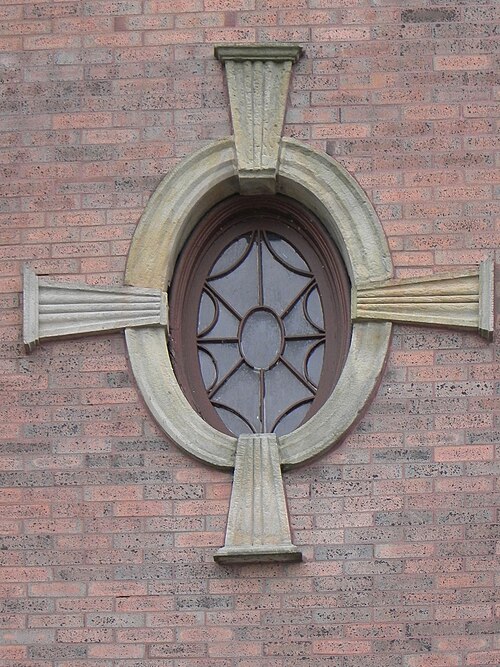
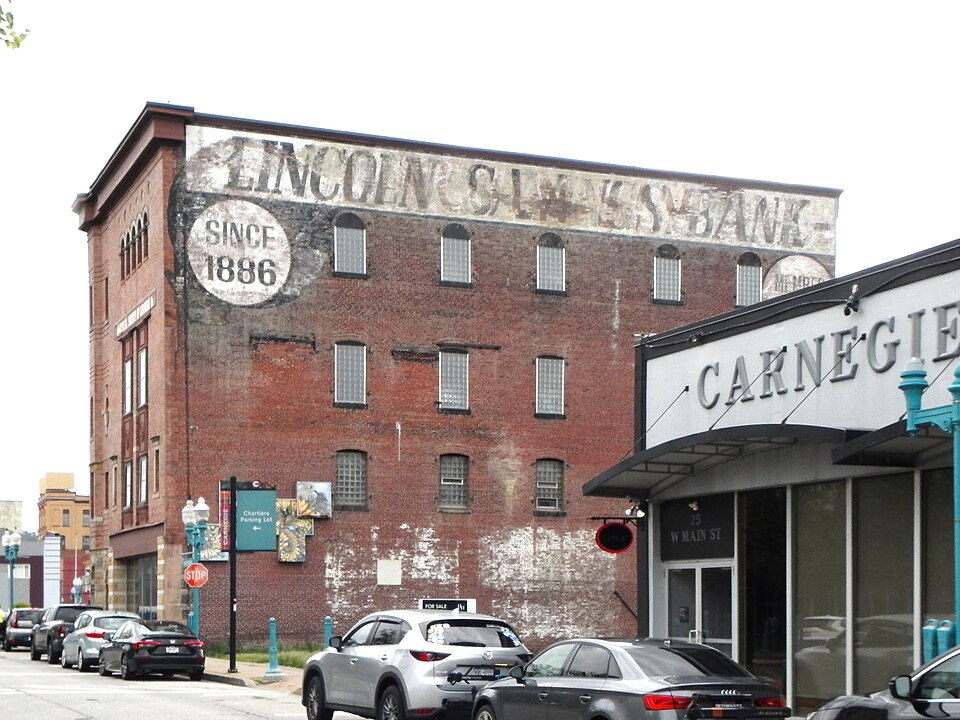

The Masonic Hall in Carnegie is a fine example of small-town Rundbogenstil, taking its details from Renaissance architecture and its rhythm from industrial Romanesque.

If Father Pitt owned this building and had to put up with those two modern blisters on top, he would have them painted to look like cat ears.

The goat ornaments were doubtless intended to reassure the Masons’ neighbors that Masonry has no satanic connotations at all.